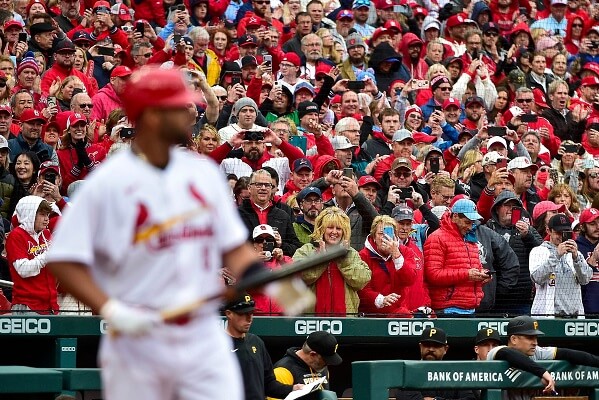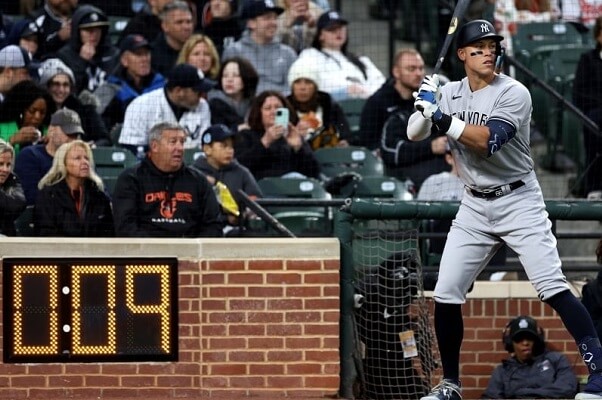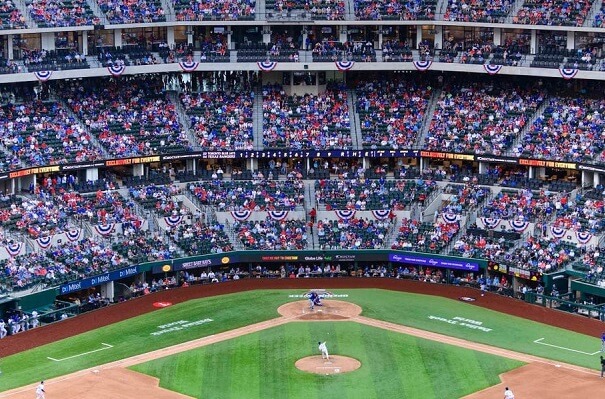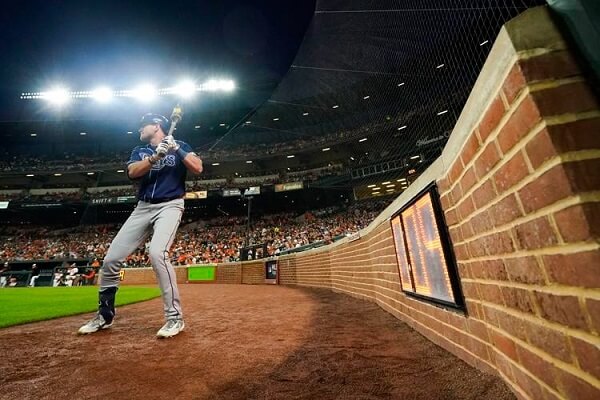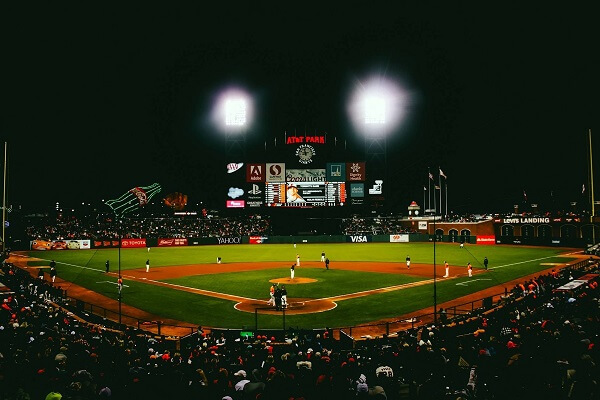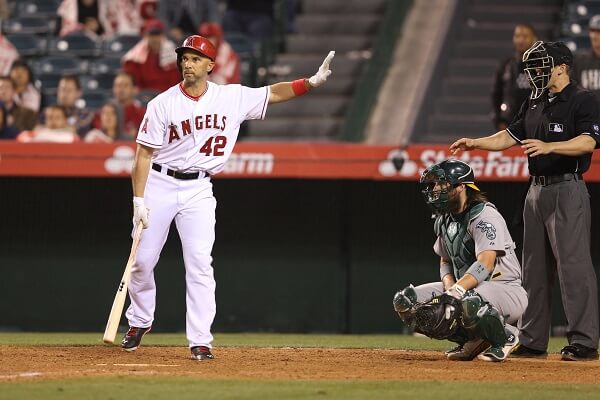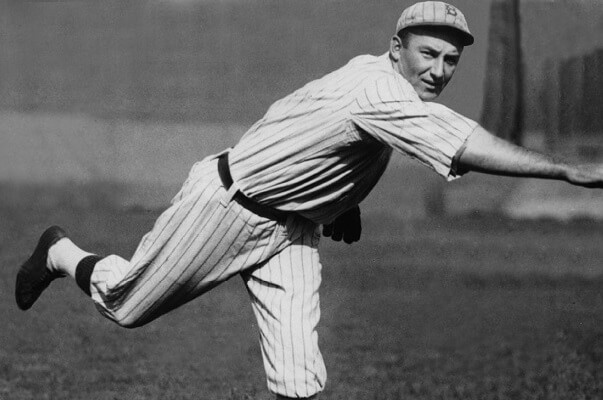|
Listen to this article
|
The duration of a baseball game is a subject of fascination and frustration for fans and players alike. Unlike most sports, where the clock determines the end of the game, baseball operates on its own unique time frame. A typical baseball game can vary widely in length, making it one of the most unpredictable sports in terms of duration. 4RaBet bonuses to enhance gaming experience and excitement.
How Long is a Typical Baseball Game?
On average, a Major League Baseball (MLB) game typically lasts around three hours. However, this is just a rough estimate, and games can be shorter or longer, sometimes significantly so. So, what are the factors that contribute to this wide range of baseball match durations?
| Factor | Influence on Game Duration |
|---|---|
| Pitching Duel vs. Hitting Extravaganza | Pitching duels tend to result in shorter games, while high-scoring games with lots of hits can make the game longer. |
| Extra Innings | Extra innings can significantly extend the game’s length as it continues until a winner is determined. |
| Pace of Play Initiatives | These measures aim to speed up the game but may have varying effects from one game to another. |
| Weather Conditions | Adverse weather conditions, such as rain, can lead to game delays and longer durations. |
| Managerial Decisions | Managerial decisions, like frequent pitching changes or strategic moves, can impact the game’s tempo. |
| Pitch Count | Efficient pitchers with lower pitch counts per inning contribute to shorter games, while high pitch counts extend them. |
| Umpire’s Strike Zone | The size and consistency of the strike zone can influence the duration of at-bats, impacting overall game length. |
- Pitching Duel vs. Hitting Extravaganza: The battle between pitchers and hitters is at the heart of baseball. A game can be a tense, low-scoring pitching duel, where both teams struggle to generate runs, leading to a quicker contest. On the other hand, a slugfest with home runs and big hits can extend the game’s length as the scoreboard lights up.
- Extra Innings: Baseball games are traditionally divided into nine innings, but they can go into extra innings if the score is tied. These innings can add significant time to a game, as teams battle it out until a winner emerges.
- Pace of Play Initiatives: In recent years, MLB has introduced the pace of play initiatives to speed up the game. These include pitch clocks and limitations on mound visits. These measures have helped to some extent in reducing game duration, but their impact varies from one game to another.
- Weather Conditions: Weather can also play a significant role. Rain delays or adverse weather conditions can pause a game for an extended period, making it last much longer than anticipated.
- Managerial Decisions: The decisions made by managers, such as changing pitchers frequently or employing different strategies, can affect the tempo of a game. Managers often make strategic moves that can lead to more extended contests.
- Pitch Count: Pitchers have pitch counts that, when exceeded, often lead to their replacement. If pitchers are efficient and can throw fewer pitches per inning, the game’s duration may be shorter. Conversely, if pitchers struggle and frequently throw a high number of pitches, it can extend the game.
- Umpire’s Strike Zone: The size and consistency of the umpire’s strike zone can influence how long an at-bat lasts. A tight strike zone can lead to more walks and longer plate appearances.
Baseball time duration is part of its charm. The unpredictable ebb and flow, the tension of extra innings, and the strategic battles on the field all contribute to its uniqueness. For some, the extended hours are a welcome immersion into the sport’s intricacies, while for others, it can be a test of patience. Regardless, baseball’s timeless nature continues to captivate fans, making every game, regardless of its length, a piece of the grand tapestry of America’s pastime.
Baseball Match Time Duration by Leagues
Baseball match times can vary across different baseball leagues around the world, with each league having its own set of rules and regulations that can influence the duration of games. Here’s a brief overview of match times in some of the most prominent baseball leagues:
- Major League Baseball (MLB) – United States and Canada:
- MLB games typically last around three hours on average, but they can vary widely.
- The games consist of nine innings, with each team having the opportunity to bat and field.
- Extra innings can extend the game indefinitely until a winner is determined.
- MLB has introduced pace-of-play initiatives to reduce game length, including pitch clocks and limitations on mound visits.
- Nippon Professional Baseball (NPB) – Japan:
- NPB games are also nine innings like MLB.
- The average duration of an NPB game is similar to MLB, around three hours.
- Extra innings can occur in NPB games as well.
- KBO League – South Korea:
- The Korean Baseball Organization (KBO) follows a similar format to MLB and NPB, with nine innings per game.
- The average game time in the KBO is typically around three hours, although it can vary.
- Cuban National Series – Cuba:
- Games in the Cuban National Series are known for their shorter duration compared to MLB and some other leagues.
- The games often last around two to two and a half hours.
- Winter Leagues and College Baseball:
- Winter leagues, like the Dominican Winter League or Venezuelan Winter League, often have slightly shorter games compared to their regular season counterparts.
- College baseball games in the United States can vary in length, with some games being shorter than MLB games due to differences in rules and pitching strategies.
- Youth and Amateur Leagues:
- Youth and amateur baseball leagues may have shorter game durations to accommodate younger players.
- Games can range from as short as one hour to two or three hours, depending on the age group and league rules.
It’s important to note that the actual duration of a baseball game can be influenced by numerous factors, as discussed in a previous response, including the style of play, weather conditions, and managerial decisions. As a result, while these leagues may have general guidelines for game duration, individual games can still vary widely in how long they last.
Baseball Game Time Limits
Baseball has a reputation for being a sport that doesn’t have a fixed time limit, and a game can potentially last indefinitely. However, in recent years, various measures have been implemented to address concerns about the length of baseball games and improve the pace of play. Here are some points that have been introduced to shorten the duration of baseball games:
- Pitch Clocks: Many leagues, including Major League Baseball (MLB), have introduced pitch clocks. Pitchers are given a set amount of time to deliver the pitch once the batter is ready. If they exceed this time limit, it results in a ball or a strike, depending on whether the pitcher or batter is responsible for the delay.
- Limiting Mound Visits: Teams are now restricted in the number of mound visits they can make in a game. This prevents unnecessary delays as coaches and players confer on the pitcher’s mound.
- Automatic Intentional Walks: Instead of having a pitcher throw four balls to intentionally walk a batter, some leagues have adopted a rule where the batter is automatically awarded first base without the need for actual pitches.
- Instant Replay Challenges: While not directly reducing game time, the use of instant replay challenges has streamlined the process of reviewing calls on the field, which can save time in the long run by preventing prolonged arguments and discussions.
- Reduced Warm-Up Time: Pitchers are encouraged to complete their warm-up pitches more efficiently between innings, with stricter time limits imposed in some cases.
- Commercial Breaks: Efforts have been made to reduce the length of commercial breaks between innings or during pitching changes to maintain the flow of the game.
- Two-Way Players: The rise of two-way players, who can both pitch and bat effectively, can reduce the need for frequent pitching changes and contribute to a faster pace of play.
- Designated Hitter (DH) Rules: In leagues where the DH rule is in place, pitchers do not bat, which can speed up the game by eliminating the need for pinch-hitters and double switches.
- Strict Enforcement of Rules: Umpires and league officials have become more diligent in enforcing existing rules, such as batters staying in the batter’s box between pitches, to minimize delays.
- Inning Breaks: Some leagues have implemented shorter inning breaks to maintain the game’s momentum, allowing for quicker transitions between offense and defense.
It’s important to note that the impact of these measures on game duration can vary from one league to another and from game to game. While they aim to speed up play, the unique dynamics of each baseball game can still lead to variations in how long they last. However, these efforts represent a proactive approach to addressing concerns about the length of baseball games and ensuring an engaging experience for fans and players alike.
How Long is an Inning in Baseball?
The duration of a baseball inning can vary, but there are some general guidelines and factors that influence how long an inning lasts:
| Factor | Influence on Inning Duration |
|---|---|
| Traditional Length | A typical inning usually lasts 15-30 minutes. |
| Number of Pitches | High-pitch counts can extend innings; quick outs make them shorter. |
| Offensive Production | Innings with many hits and runs scored tend to take longer. |
| Pitching Changes | Pitching changes during an inning can add time. |
| Umpire Decisions | Disputes and instant replay reviews can cause delays. |
| Catcher-Pitcher Conferences | Discussions between catchers and pitchers can slow the game. |
| Scoring Decisions | Close plays and run-scoring reviews can extend innings. |
| Injury Delays | Injuries require medical attention and can lead to delays. |
| Runners in Scoring Position | More deliberate plays with runners in scoring position may extend innings. |
| Intentional Walks | Traditional intentional walks add time; automatic walks are quicker. |
- Traditional Length: In professional baseball leagues like Major League Baseball (MLB) in the United States, a typical inning can last anywhere from 15 to 30 minutes, depending on various factors. This includes the number of hits, walks, strikeouts, and other events that occur during the inning.
- Number of Pitches: The number of pitches thrown by the pitcher and the ability of batters to foul off pitches can significantly impact the length of an inning. A high-pitch count can extend an inning, while quick outs and efficient pitching can make it shorter.
- Offensive Production: Innings with multiple hits, walks, and runs scored tend to take longer due to the additional base runners and the time it takes to round the bases. Conversely, quick three-up, three-down innings can be shorter.
- Pitching Changes: When a team makes a pitching change during an inning, it adds time to the inning’s duration. The incoming pitcher often takes warm-up throws, and the batter may take some practice swings.
- Umpire Decisions: Delays can occur if there are challenges or disputes over calls by the umpires. Reviewing plays through instant replay can also add time to an inning.
- Catcher-Pitcher Conferences: Catchers and pitchers often communicate to discuss pitch selection and strategy. These conferences can slow down the pace of the game.
- Scoring Decisions: In situations where there’s a close play at home plate, or if there’s a need to review whether a run scored legally, it can lead to additional time being added to the inning.
- Injury Delays: Injuries to players, especially to pitchers, can result in substantial delays as medical staff attends to the injured player.
- Runners in Scoring Position: When runners are in scoring position (on second or third base), it can lead to more deliberate pitching and defensive plays, potentially extending the inning.
- Intentional Walks: Traditional intentional walks, where pitchers throw four balls outside the strike zone, can also extend the length of an inning. Some leagues have introduced automatic intentional walks to speed up the process.
In youth and amateur baseball leagues, innings can be shorter to accommodate younger players. In Little League, for example, an inning may consist of a set number of batters or a predetermined time limit, which can vary depending on the specific league’s rules.
Overall, the length of a baseball inning is influenced by a combination of game situations, strategies, and the pace at which events unfold. While there are general guidelines, the uniqueness of each inning keeps the game exciting and unpredictable.
The Longest Baseball Game Duration in History
The longest game in professional baseball history occurred on May 5 and 6, 1984, during a minor league baseball game between the Pawtucket Red Sox and the Rochester Red Wings. This memorable game took place at McCoy Stadium in Pawtucket, Rhode Island, and it holds the record for the longest game in terms of innings played.
Here are some remarkable details about this historic game:
- Number of Innings: The game lasted an astonishing 33 innings, which is significantly longer than the usual nine innings in professional baseball.
- Duration: In terms of time, the game spanned 8 hours and 25 minutes, starting on the evening of May 5 and concluding in the early morning hours of May 6.
- Final Score: The final score was 3-2 in favor of the Pawtucket Red Sox, and Dave Koza scored the winning run.
- Notable Performances: Cal Ripken Jr., a future Hall of Famer who played for the Rochester Red Wings at the time, played all 33 innings of the game. Pawtucket’s pitcher, Bob Ojeda, pitched for 9 innings despite being a starting pitcher, and he was replaced by several relievers.
- Unique Circumstances: The game had been suspended multiple times due to rain and fog, which contributed to its lengthy duration.
This game is often remembered as a testament to the endurance and dedication of both the players and the fans. It remains one of the most iconic moments in baseball history, and it highlighted the unpredictable and remarkable nature of the sport, where a game can extend far beyond its usual length when the circumstances are extraordinary.
Conclusion
In conclusion, the duration of a baseball game is a fascinating aspect of the sport that sets it apart from many others. While there are general guidelines and efforts to manage game length, baseball’s inherent unpredictability ensures that no two games are exactly the same in terms of duration. Factors such as pitching duels, offensive explosions, extra innings, and managerial decisions all play a role in shaping the length of a game. This variability is part of baseball’s charm, offering fans the excitement of a timeless contest where every pitch and every at-bat can hold the promise of thrilling moments, making it a sport where the passage of time is a unique and integral part of the experience.
Baseball Match Timing Video Review
FAQ
Q: How long is a typical baseball game?
A: A typical baseball game, like those in Major League Baseball (MLB), usually lasts around three hours, but it can vary.
Q: What factors can influence the duration of a baseball game?
A: Factors such as pitching duels, offensive production, extra innings, managerial decisions, weather conditions, and pace of play initiatives can all influence how long a baseball game lasts.
Q: Can baseball games go into extra innings?
A: Yes, baseball games can go into extra innings if the score is tied at the end of the regulation nine innings, and they can continue until a winner is determined.
Q: What are the pace of play initiatives, and how do they affect game duration?
A: Pace of play initiatives are measures introduced to speed up the game. They include pitch clocks, limitations on mound visits, and other rules designed to reduce downtime between plays and pitches.
Q: How does the weather impact the duration of a baseball game?
A: Adverse weather conditions, such as rain, can lead to game delays and significantly extend the length of a baseball game.
Q: What are some strategies that managers use that can affect game duration?
A: Managers can influence game duration through decisions like changing pitchers frequently, employing different strategies, and making substitutions based on matchups.
Q: How do pitch counts affect the length of an inning or game?
A: High pitch counts by pitchers can extend innings and overall game duration, while efficient pitching with lower pitch counts per inning can make games shorter.
Q: What is the role of the umpire’s strike zone in game duration?
A: The size and consistency of the umpire’s strike zone can influence how long at-bats last, which in turn affects inning and game length. A tight strike zone may lead to more walks and longer plate appearances.

I’m Johar, hailing from the vibrant nation of India. My journey into the realm of online sports betting began as a curiosity and quickly transformed into a passion. With a background in mathematics and a fascination for sports, I found myself naturally drawn to the world of odds, probabilities, and strategic wagering.
Through my articles, I aim to bridge the gap between the complexities of sports betting and the everyday bettor, offering insights, tips, and a deeper understanding of this thrilling pastime. My commitment lies not only in helping others make informed betting decisions but also in promoting responsible gambling practices within the diverse and dynamic landscape of Indian sports betting.
